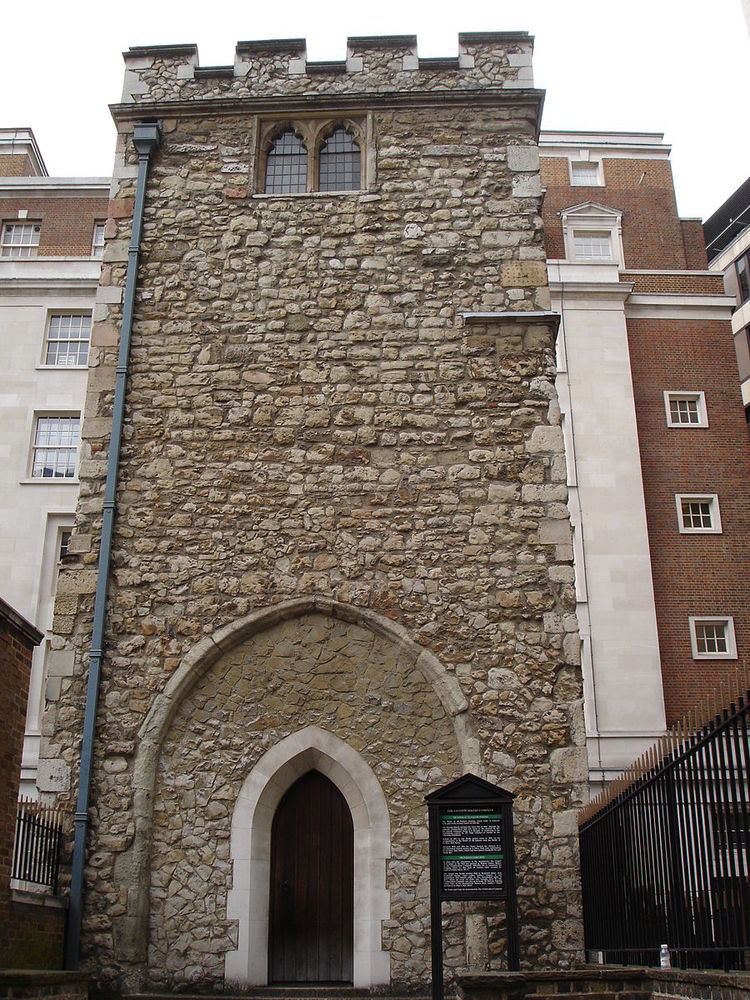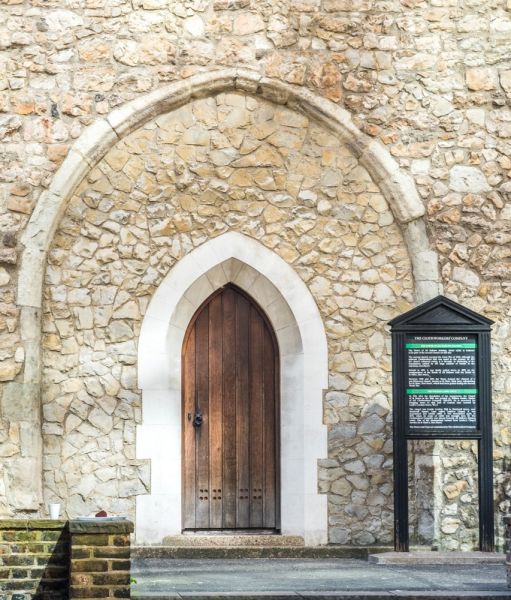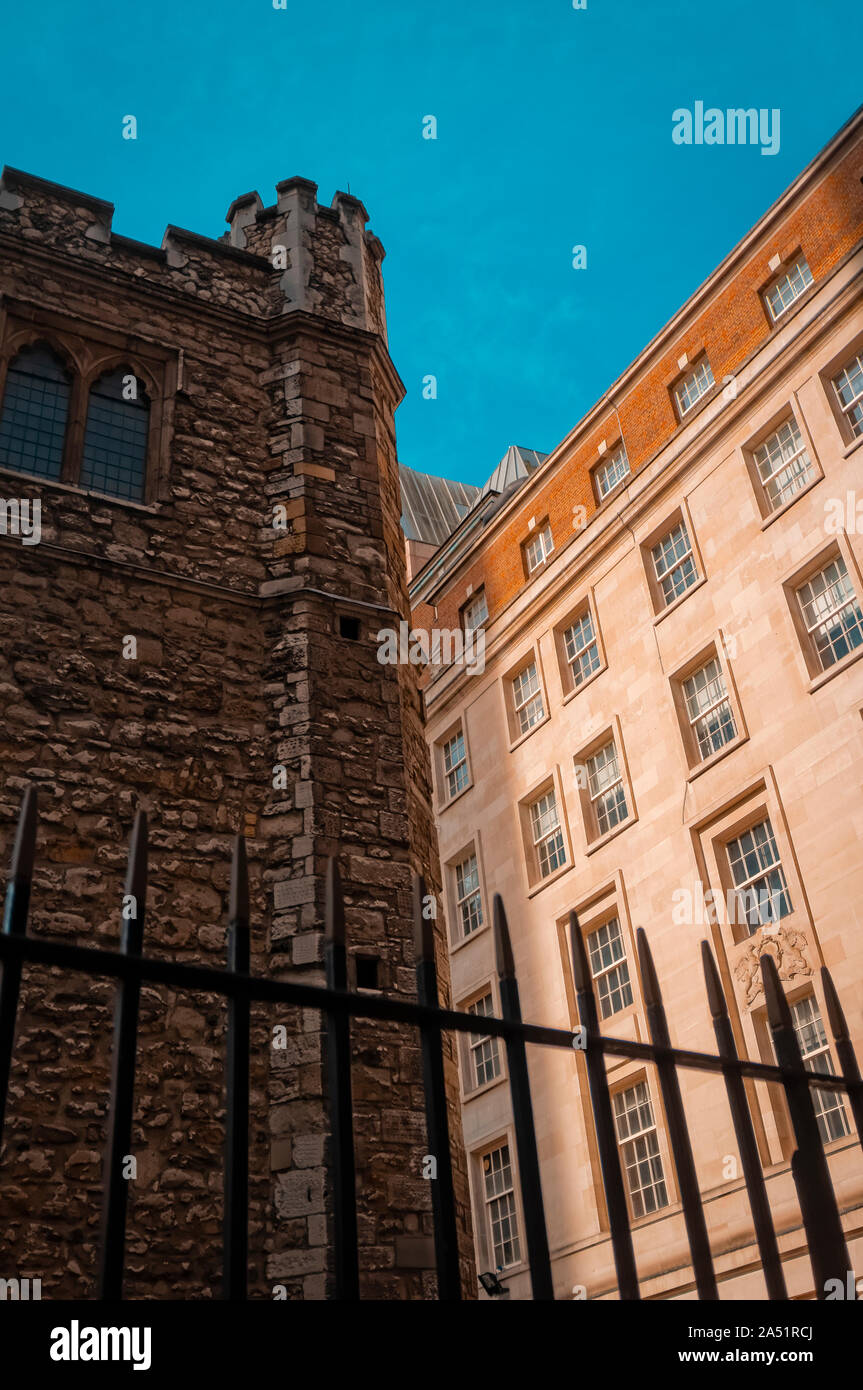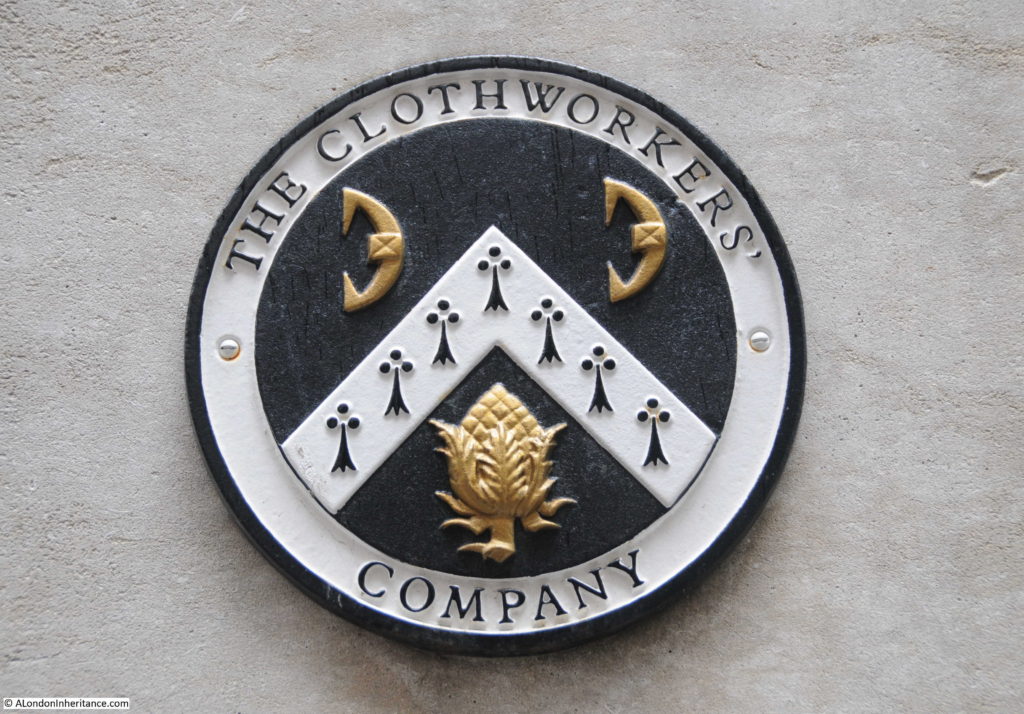
'Church of All Hallows Staining, London, C1750' Giclee Print
The tower of All Hallows Staining is very different to the majority of the City churches which typically have a steeple or spire and conform to the style introduced by Wren during the post Great Fire rebuild of the City churches. This difference in style indicates the age of the church and that it is a survivor from before the Great Fire of 1666.

The church tower of All Hallows Staining in 1948 and 2018
The church of All Hallows Staining first appeared in the historical record in 1177. Although the reference to 'Staining' is unclear, the site may have belonged to the manor of Staines.. In the early seventeenth century, John Stowe's Survey of London records that All Hallows Staining had been "repaired in many parts of it, and very nearly and decently beautified, at the cost of the.

All Hallows Staining, London Genealogy Genealogy FamilySearch Wiki
The name 'All Hallows' refers to a Christian feast day honouring all the saints, celebrated on November 1. 'Staining' derives from 'Staniggencherch' or 'stone church', distinguishing itself as a prosperous parish, able to afford such a material at a time when many parish churches were still made of wood. The church itself is.

All Hallows Staining Tower, City of London, England, UK Stock Photo Alamy
All Hallows Staining collapsed in 1671, due perhaps to weakening of the foundations from the high number of burials at the church. A new church was built, but this was dismantled in 1870, leaving only the tower.

The church tower of All Hallows Staining in 1948 and 2018
The church of All Hallows Staining is first mentioned in 1177; although the origin of the word 'Staining' in the name is unclear. It may be that the site belonged to the manor of Staines. Queen Elizabeth I gave thanks in this church after her release from the Tower of London. The building survived the Great Fire of 1666 but collapsed in 1671.

The church tower of All Hallows Staining in 1948 and 2018
All Hallows Staining: All Hallows the Great---ad fenum; ---at the Hay Wharf; ---in the Ropery: All Hallows the Less---on the Cellars; ---on the Solars: Austin Friars precinct: Augustinians, founded c. 1265. Absorbed parishes of St Olave Broad Street and St Peter Broad Street (also St Peter le Poor or Poer)

The church tower of All Hallows Staining in 1948 and 2018
The name All hallows staining refers to the stone used in its construction which distinguished itself from the other fourteenth century churches which were predominantly wooden in this area of London. Many churches were still made of wood with only a few made of expensive stone, as London became more prosperous the number of stone churches.

All Hallows Staining Alchetron, The Free Social Encyclopedia
All Hallows Staining was a Church of England church located at the junction of Mark Lane and Dunster Court in the north-eastern corner of Langbourn ward in the City of London, England, close to Fenchurch Street railway station. All that remains of the church is the tower, built around 1320 AD as part of the second church on the site..

All Hallows Staining Historic London Churches
A Handbook for London 1849. Allhallows Staining in Langbourne Ward or Allhallows in Mark Lane. "Commonly called Stane church (as may be supposed) for a difference from other churches of that name in this city, which of old time were built of timber and since were built of stone.". - Stow, p.

All Hallows Staining and Rectory Stock Photo Alamy
All Hallows Staining Tower. 'All Hallows Staining, church is situated near the eastern extremity of Langbourn Ward, on the west side, and near to the north end of Mark Lane, within four houses all of Fenchurch Street. It is believed to be a Saxon origin from its cognomen Stane, corruptly Staining, the Saxon word for stone, probably to.

HistoryLondon London history, London city, London
The church of All Hallows, Bromley-by-Bow, was constructed using the proceeds from the sale of the site. The parish of All Hallows Staining was united to the parish of St Olave Hart Street in 1870. The Society for the Commemoration of the accession of Queen Elizabeth I was a dining and campanological society.

'Church of All Hallows Staining, London, C1750' Giclee Print
All Hallows Staining was an Church of England church located at the junction of Fenchurch Avenue and Billiter Street in the north- eastern corner of Langbourn ward in the City of London, close to Fenchurch Street railway station All that remains of the church is the tower, built around 1320 as part of the second church on the site.. The first mention of the church was in the late 12th century.

View of the Church Tower of All Hallows Staining from Star Alley in the City of London, Britain
By the mid-nineteenth century, All Hallows Staining was under threat due to development and due to the consolidation of London parishes amid the flight of many Londoners from an increasingly industrialized city to the leafy suburbs. Its tower - built in roughly 1320 - and several graves in its small adjacent cemetery are all that remain.[2]

The church tower of All Hallows Staining in 1948 and 2018
The tower of All Hallows remains, on Mark Lane next to the Clothworkers' Hall. A history of St Olave 1895 to the present by Brian Grumbridge, published in 2020, is available for sale, as is a short pictorial history and guide called 'Our Very Own Church', available from the church office.. St. Olave Hart Street and All Hallows Staining.
Medieval London All Hallows staining
All Hallows Staining was a Church of England church located at the junction of Mark Lane and Dunster Court in the north-eastern corner of Langbourn ward in the City of London, England, close to Fenchurch Street railway station. [1] All that remains of the church is the tower, built around AD 1320 as part of the second church on the site.

The church tower of All Hallows Staining in 1948 and 2018
All Hallows Staining on the Copperplate map of 1555. Even though it survived the Great Fire of 1666, the church of All Hallows Staining collapsed in 1671. A possible cause was that too many burials against the church walls had undermined the foundations. It was rebuilt in 1674. An etching by West & Toms shows what this new church looked like.